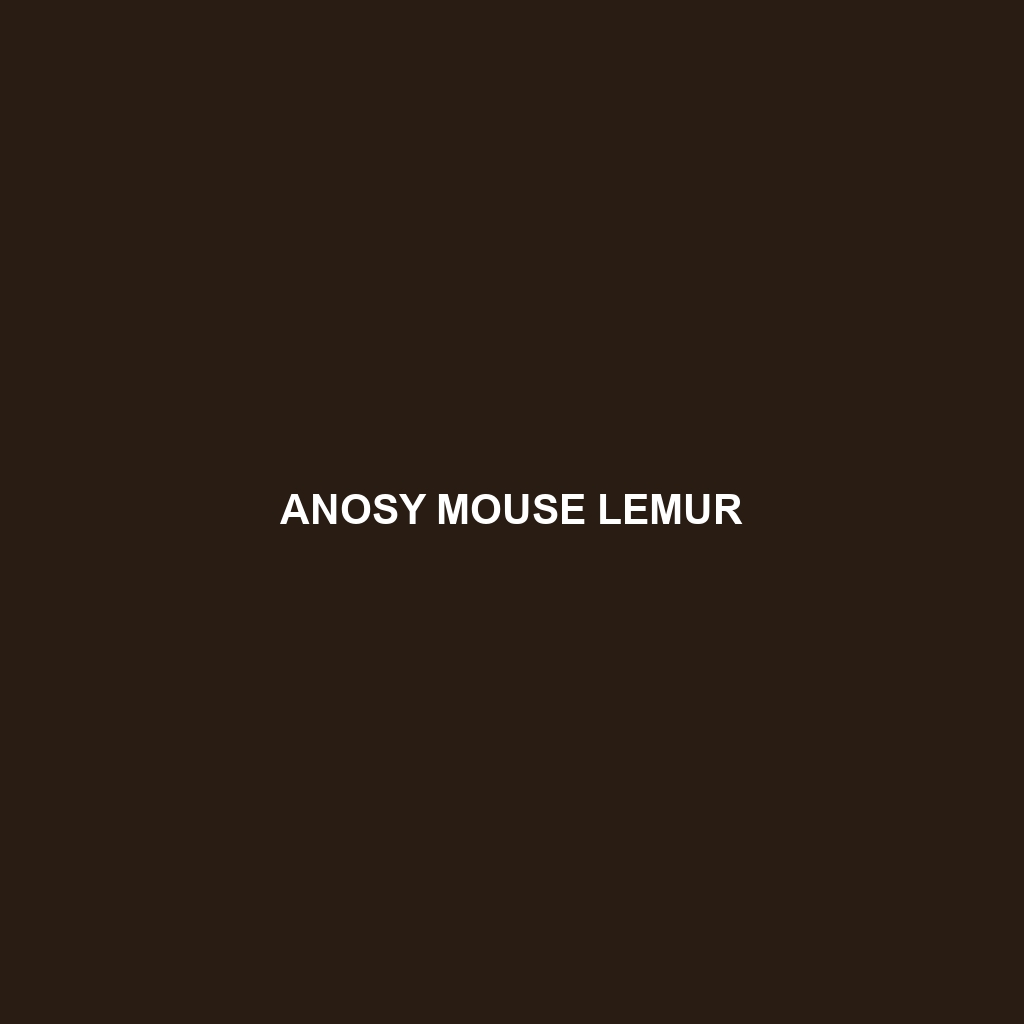Anosy Mouse Lemur
Common Name: Anosy Mouse Lemur
Scientific Name: Microcebus jollyae
Habitat: The Anosy Mouse Lemur is primarily found in the Anosy region of southern Madagascar. This lemur thrives in tropical dry forests and is heavily associated with degraded habitats that include spiny bush and scrub. The lemur’s habitat is integral to local ecosystems, and its presence is indicative of the health of Madagascar’s biodiversity.
Physical Characteristics: Anosy Mouse Lemurs are small primates, averaging about 22 centimeters in length, including their tail. They possess a dense, soft fur that is typically greyish-brown with lighter underparts. Their large, round eyes are adapted for nocturnal activity, allowing these lemurs to see well in low-light conditions. Distinctive features include a long tail that aids in balance and thin limbs suitable for navigating through the trees.
Behavior: This species is primarily nocturnal, becoming active at dusk to forage for food. Anosy Mouse Lemurs demonstrate territorial behavior, with males often engaging in vocalizations and scent-marking to establish dominance. They are social creatures, commonly found in small groups and exhibiting complex social interactions. Their agility and ability to leap between branches make them fascinating to observe in their natural habitat.
Diet: The diet of the Anosy Mouse Lemur primarily consists of fruits, insects, and flowers. They are known to consume a variety of fruits that are available in their environment, particularly during the fruiting season, while also foraging for insects to supplement their protein intake. Their feeding habits play a crucial role in seed dispersal, contributing to the regeneration of their habitats.
Reproduction: The Anosy Mouse Lemur typically breeds once a year, with a mating season that occurs during the rainy months from November to January. After a gestation period of around 60 days, females give birth to one or two offspring. Maternal care is strong, with mothers nursing their young for several months and teaching them essential survival skills.
Conservation Status: The Anosy Mouse Lemur is currently classified as ‘Endangered’ according to the International Union for Conservation of Nature (IUCN). Deforestation, habitat fragmentation, and illegal hunting pose significant threats to its survival, warranting urgent conservation efforts to protect this unique species.
Interesting Facts: The Anosy Mouse Lemur was only recently identified as a distinct species in 2009, highlighting the ongoing discovery of biodiversity in Madagascar. They are among the smallest primates in the world and can leap up to four times their body length, showcasing remarkable agility.
Role in Ecosystem: As a vital part of the tropical dry forests in Madagascar, the Anosy Mouse Lemur plays a crucial role in its ecosystem through seed dispersal. By feeding on a variety of fruits and flowers, these lemurs help maintain plant diversity, which in turn supports other wildlife in the region. Their interactions with insects and plants underscore their importance in sustaining the ecological balance within their native habitat.
